Electricity_Basics_Part_5__Voltage_Current_and_Resistance.pdf
Transcript:
[0m:4s] Hi I'm Josh Bloom, welcome to another video in the RSP Supply education series. If you find that these videos are helpful to you, it certainly helps us out if you could give us a big thumbs up and subscribe to our channel. In today's video, we are going to continue on in our brief series in which we are talking about the basics of electricity.
[0m:24s] In our last video, we talked about resistance. If you remember, in that video, we said that electrical resistance is simply a way to quantify the ability electrons will have to flow through any given conductor. Or in other words, it is the measurement of how easily current can flow through wire or any conductor.
[0m:46s] We also discussed how the amount of resistance can impact other electrical principles, voltage, current, as well as charge.
[0m:55s] For the purpose of this video, we want to talk more about how these different principles affect one another with the focus on just voltage current and resistance. If we refer back to the example we have used in our other videos in which we represent electricity as water and how it behaves as it flows through a pipe, in that example, we talked about how charge is represented by how much water is in the pipe. For this video, let's assume that we have an unlimited flow of water coming into our pipe. This unlimited flow would be represented by the electricity that we can get from our homes in a wall outlet. When we plug something into one of these outlets, there is no specific amount of time that we have until the outlet runs out of charge or energy.
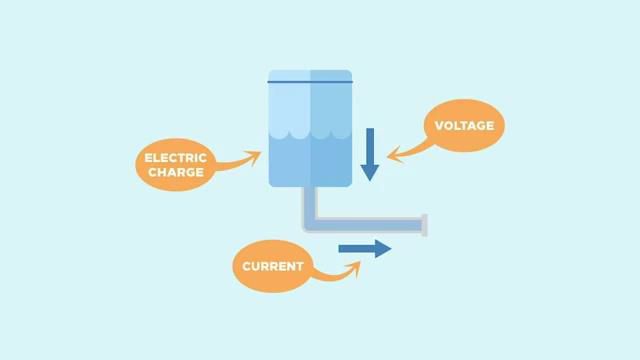
[1m:46s] This is because the outlet is giving us continuous or unlimited charge. So let's again, look at this analogy and talk about how voltage, current, and resistance are represented.
[1m:58s] Voltage is represented as the amount of water pressure that we would see in the pipe.
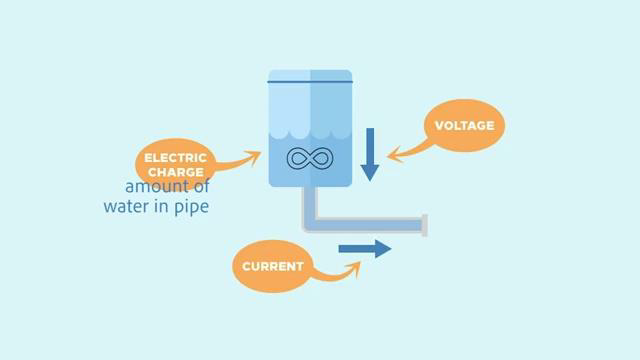
[2m:5s] Current is represented as the water actually flowing through the pipe, and resistance is how easily it is for the water to flow through the pipe.
[2m:15s] So if we have an example where water is flowing through a pipe at a constant pressure,
[2m:21s] and that pressure will not change, we then know that the only things that we can potentially impact in the pipe
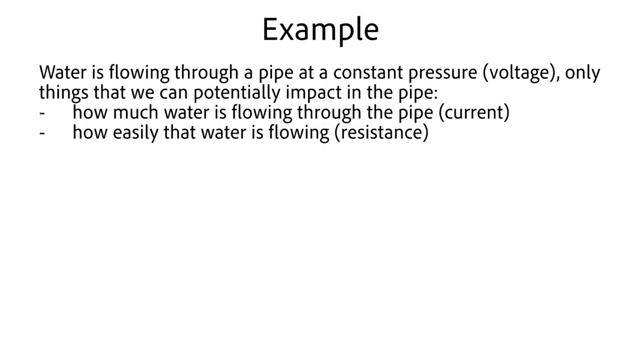
[2m:28s] are how much water is flowing through the pipe, and how easily that water is flowing.
[2m:34s] In relationship to electricity, this would be represented as say a 120 Volt circuit in which the voltage is constant.
[2m:43s] So then the only things that could potentially change in the circuit would be the current
[2m:49s] or resistance.
[2m:50s] So let's see what happens when we alter one of these principles.
[2m:55s] In the water pipe that has constant pressure. What happens if all of the sudden we increase the diameter of the pipe that the water is actually flowing through?
[3m:7s] Does the same amount of water flow?
[3m:10s] Is it now harder or easier for the water to flow through the pipe?
[3m:15s] Well, we did not change the pressure of the water at all.
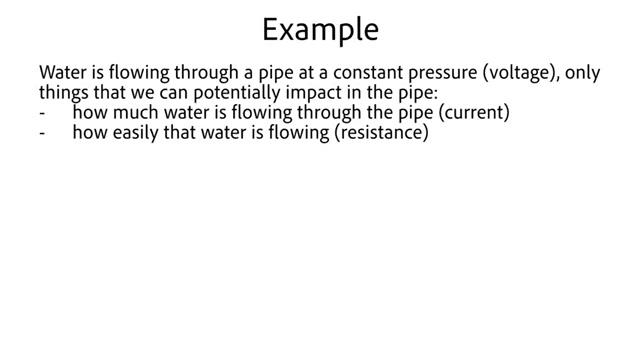
[3m:19s] So the same amount of water is still flowing, but it is definitely flowing more easily through the pipe.
[3m:27s] So there is not as much stress on the pipe. However, the amount of water coming out of the pipe will not change. It will simply be coming out more slowly because of the reduced resistance in the pipe and the increased ability for more water to flow.
[3m:44s] In electrical terms, this would be like increasing the size of the wire in 120 Volt circuit.
[3m:51s] The electrical pressure or voltage would not change. So because of the increase in wire size or reduced resistance, the amount of current that will flow through the wire will increase, but the amount of power being generated will not change.
[4m:8s] So if we change this scenario and instead of increasing the size of the pipe, we decrease the size of the pipe what will happen?
[4m:16s] Well, the same amount of water will still be flowing, but it will have much more resistance as it flows through a smaller pipe and will be coming out of the end of the pipe, much faster, with more intensity.
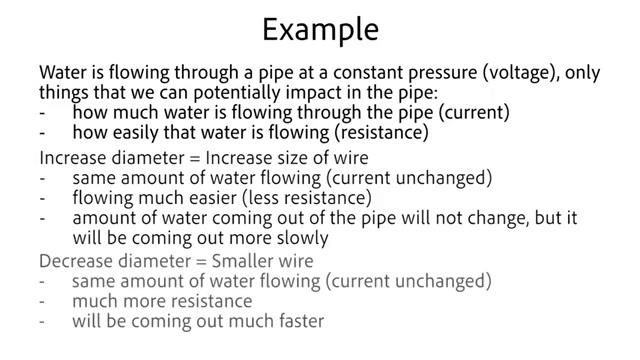
[4m:31s] So, with this increased resistance due to the small pipe, the flow is restricted. In electrical terms, this would be the equivalent to using a smaller wire in the same 120 Volt circuit, the resistance to electrical flow will have increased. Therefore the amount of electrical current coming out of the wire will decrease.
[4m:57s] In short,
[4m:58s] these three principles are closely related in how they behave in regards to electrical behavior.
[5m:6s] If any of these values are changed in a circuit, the other values are impacted.
[5m:13s] There is a simple equation that is used to demonstrate this behavior. It is voltage is equal to amperage, or current, times resistance. This equation is referred to as Ohm's law and it will be the focus of our discussion in our next video in this series. For a full line of industrial electrical equipment and thousands of other products, please go to our website. For more information or other educational videos, go to RSPSupply.com, the Internet's top source for industrial hardware. Also, don't forget: like and subscribe.




